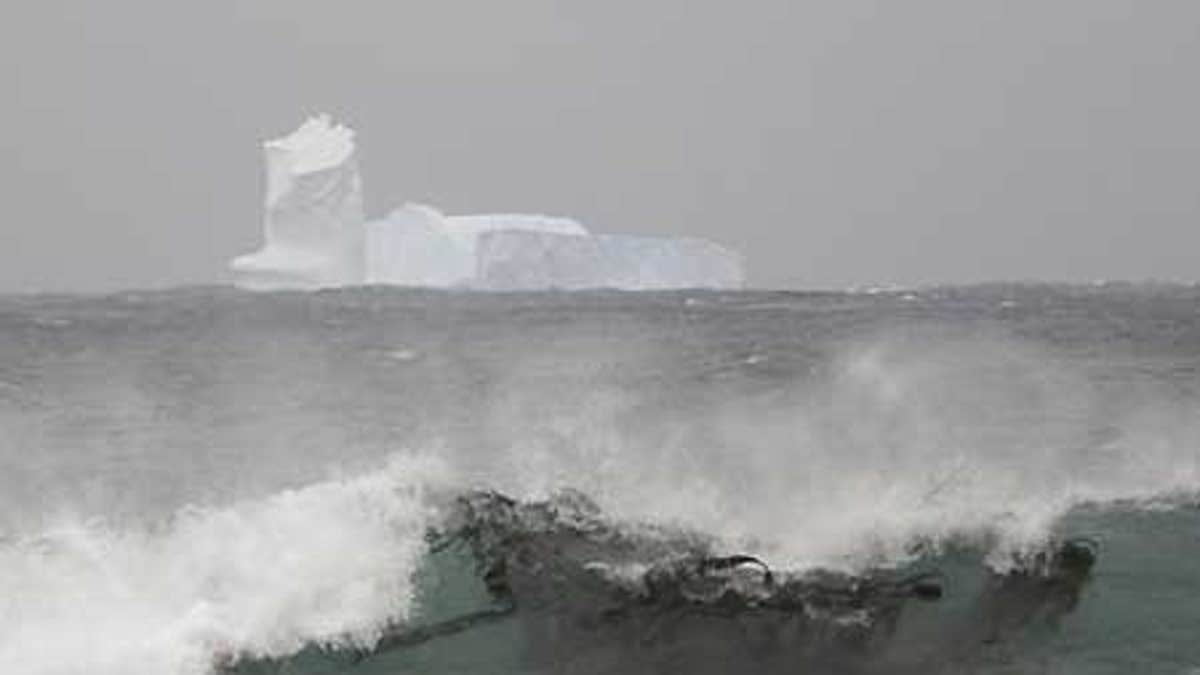
Nov. 16: An iceberg is seen at Sandy Bay on Macquarie Island's east coast, in the Southern Ocean 930 miles southeast of Tasmania, Australia. (AP)
WELLINGTON, New Zealand – A flotilla of hundreds of icebergs that split off Antarctic ice shelves is slouching toward New Zealand and could pose a risk to ships in the south Pacific Ocean, officials said Tuesday.
The nearest one, measuring about 30 yards tall, was 160 miles southeast of New Zealand's Stewart Island, Australian glaciologist Neal Young said. He couldn't say how many icebergs in total were roaming the Pacific, but he counted 130 in one satellite image alone and 100 in another.
Large numbers of icebergs last floated close to New Zealand in 2006, when some were visible from the coastline — the first such sighting since 1931.
Maritime officials have issued navigation warnings for the area south of the country.
"It's an alert to shipping to be aware these potential hazards are around and to be on the lookout for them," Maritime New Zealand spokeswoman Sophie Hazelhurst said.
No major shipping lanes or substantial fishing grounds are in the area, but most ships there have little hull protection if they collide with an iceberg — which typically has 90 percent of its mass under water. Very few adventure sailors would be in the waters in November, when it is still the southern hemisphere's spring.
Icebergs are routinely sloughed off as part of the natural development of ice shelves, but Young said the rate appeared to be increasing as a result of regional warming in Antarctica.
"Whole ice shelves have broken up," he said, as temperatures have risen in Antarctica, where they are up as much as 5 degrees Fahrenheit in the past 60 years.
But he cautioned against linking the appearance of the bergs in New Zealand waters to global warming: The phenomenon depends as much on weather patterns and ocean currents as on the rate at which icebergs are calving off Antarctic ice shelves.
In the current case, a cold snap around southern New Zealand and favorable ocean currents conspired to push the towering visitors, which have drifted around Antarctica for the past nine years, to the region intact.
"Icebergs this far north (near New Zealand) are not that unusual," said New Zealand glaciologist Dr. Wendy Lawson Lawson, noting that an iceberg's reach was determined by its size.
"If an iceberg starts off large, it will last longer in the sea. Its movement and where it ends up is determined by the weather, wind, ocean currents and the temperature," Lawson, head of the department of geography at Canterbury University, told The Associated Press.
On Monday, Rodney Russ, expedition leader on the tourist ship Spirit of Enderby, spotted a 500-foot-long iceberg about 60 miles northeast of Macquarie Island and heading north — about 500 miles south of New Zealand. Australian scientists reported another mass of 20 icebergs drifting north past Macquarie Island two weeks ago.
Young said satellite images showed the group of icebergs, spread over a sea area of 600 miles by 440 miles, moving on ocean currents away from Antarctica.
Icebergs are formed as the ice shelf develops. Snow falls on the ice sheet and forms more ice, which flows to the edges of the floating ice shelves. Eventually, pieces around the edge break off.
